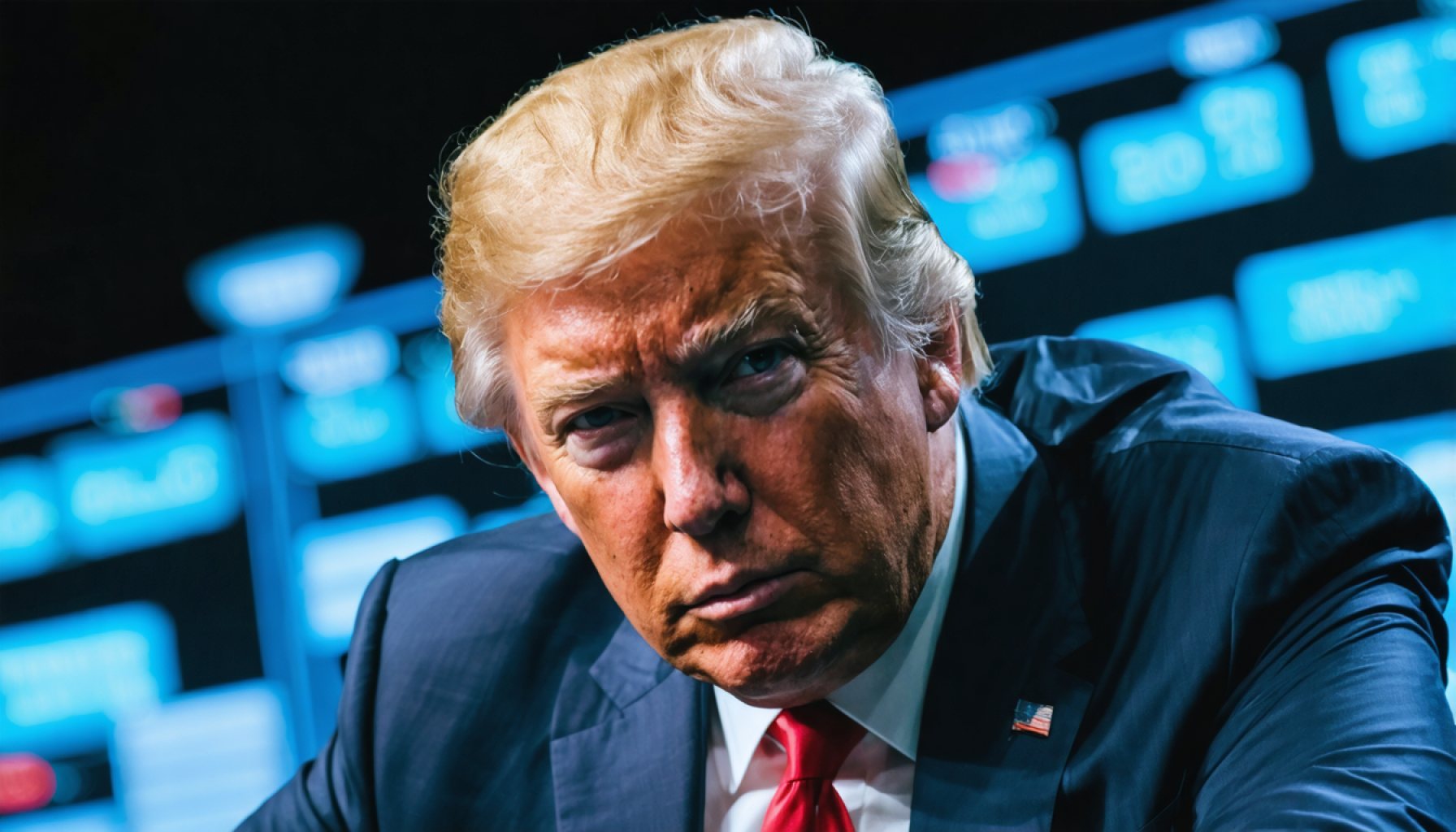- Donald Trump’s tariff ultimatum signaled a major shift in U.S. international trade policy.
- The message aimed to reforge economic relationships and assert U.S. economic sovereignty.
- Markets reacted with initial uncertainty, spotlighting debates on trade strategies and globalization.
- This stance prompted both criticism and intrigue, urging nations to reassess trade partnerships.
- The approach emphasized the dynamic nature of global trade, blending politics, economics, and national identity.
- Trump’s strategy highlighted the non-static balance of power in international commerce.
- This episode underscores the necessity for adaptability and strategic thinking in global trade dynamics.
Amidst a cacophony of economic tensions, a potent proclamation from the then-President of the United States, Donald Trump, reverberated around the globe. Aboard the majestic Air Force One, Trump delivered a message as clear as a bell on a frosty winter morning: embrace the tariffs, or cease trading altogether.
The message, bold and unflinching, marks a pivotal moment in international trade—one where the U.S. took a decisive step to recalibrate its economic relationships. With unapologetic conviction, the President’s words underscored a change in tide, beckoning allies and adversaries alike to reconsider their stance in the shifting sands of trade policy.
His strategy hinged on the belief that tariffs would fortify the U.S. economy and reinforce its sovereignty in a global market often dictated by international alliances and compromises. The U.S. economy, according to Trump, could surge forward robustly, buoyed by a newfound autonomy in deciding its own economic fate. Markets may have trembled initially, casting shadows over the immediate investor sentiment, but Trump’s administration pressed on with the resolve of a nation determined to redefine its economic borders.
This ultimatum, despite its unvarnished delivery, urged the world to engage in a new dialogue around the essence of fair trade. It sparked debates and challenged the conventional frameworks of globalization, stirring reflections on the balance of power, equity, and opportunity in international commerce.
While critics vocalized their concerns over potential economic fallout, others watched with intrigue, perhaps seeing an opportunity to recalibrate their own strategic alliances. At its heart, Trump’s stance invited nations to re-evaluate the nature of trade partnerships—not merely transactions, but as dynamic relationships intertwined with politics, economics, and national identity.
The bold approach illuminated a clear takeaway: in the realm of global trade, the strategies of yesterday may not hold sway tomorrow. In choosing to stand ground, Trump reminded the world that the equilibrium of power in international trade is not static, but a dance of diplomacy, economy, and, occasionally, a little bit of bravado.
For observers near and far, this episode serves as a vivid reminder that in the often unpredictable theater of global trade, adaptability, and strategy will always remain at the forefront. As the world moves forward, the echoes of this unwavering decree invite all to reconsider just how tightly-held the reins of trade are—and who holds them.
The Shockwave of Trump’s Trade Policies: What You Need to Know
Understanding Trump’s Tariff Ultimatum: Exploring the Impact and Future of Global Trade
The bold trade proclamation by former President Donald Trump marked a significant shift in U.S. economic strategy and had wide-ranging impacts on international trade dynamics. It brought the concept of tariffs to the forefront and prompted both criticism and support across the globe. Let’s delve deeper into the facts and implications of Trump’s tariff strategy beyond the source article.
1. Tariff Strategy Explained
Trump’s administration believed that tariffs would serve as a tool to boost American industries by making foreign goods more expensive and thus encouraging local production. The tariffs primarily targeted China but also affected traditional allies in Europe and North America, sparking tense negotiations.
2. Real-World Use Cases of Tariffs
– Manufacturing and Agriculture: Tariffs provided a level of protection to American manufacturers that faced competition from lower-cost countries. However, the agricultural sector, especially soybean farmers, suffered as retaliatory tariffs hit U.S. exports to China.
– Technology Sector: The tech industry faced mixed outcomes. Companies reliant on foreign manufacturing faced higher costs, while domestic manufacturers could benefit from reduced competition from imports.
3. Market Forecasts & Industry Trends
Tariff impositions often lead to short-term market disruptions but can also spark longer-term strategic planning for industries looking to localize production. In the years following Trump’s tariff policies, companies began exploring diversified supply chains to mitigate risks.
4. Controversies & Limitations
– Global Criticism: Many criticized the tariffs as protectionist and a step backward from globalization, arguing they could trigger trade wars. The World Trade Organization (WTO) expressed concerns over the potential violation of international trade rules.
– Economic Impact: The U.S. Congressional Budget Office estimated a reduction in GDP growth as a result of the tariffs, particularly affecting households and businesses through higher prices.
5. Security & Sustainability
National security considerations were often cited, particularly with technological goods from China. However, sustainability wasn’t a leading focus in these discussions. Shifts in trade policy can instigate more local production, which may reduce carbon footprints, but this isn’t guaranteed without explicit environmental policies.
6. Insights & Predictions
– Evolving Trade Policies: Future administrations may look to balance tariffs with diplomatic solutions, aiming for fair trade without alienating major economic partners.
– Global Supply Chains: Businesses are likely to continue diversifying supply chains to minimize tariff exposure and geopolitical risks.
7. Pros & Cons Overview
– Pros: Improved competitiveness for U.S. industries; strategic leverage in trade negotiations.
– Cons: Higher consumer prices; strained international relationships; unpredictable market fluctuations.
Actionable Recommendations
– For Investors: Keep an eye on policy changes and how they affect different sectors, particularly manufacturing and agriculture.
– For Business Leaders: Consider diversifying supply chains and preparing for shifting trade landscapes.
– For Consumers: Stay informed on how tariff changes may affect prices of imported goods.
For more in-depth insights into the economic policies that shape global trade, visit the [U.S. Department of Commerce](https://www.commerce.gov).
This comprehensive overview of Trump’s tariff strategies highlights the complexity of global trade dynamics and emphasizes the need for adaptability in an ever-changing economic environment.










